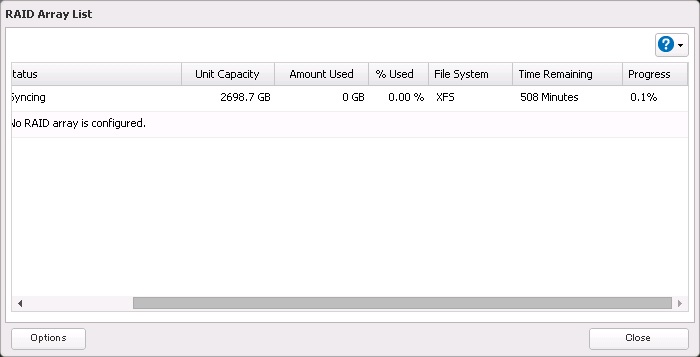Knowledge Base
Search by either entering keywords or by selecting a product.
Configuring a RAID Array on a Buffalo TeraStation
For TeraStation 5010/3010/3020/6000 series, please refer to this KB article.
Note: This procedure will delete any data currently on the TeraStation!
- Access Settings, the TeraStation's web user interface, by entering the current IP address of the unit into a web browser. If the current IP is unknown the unit can be located using NASNavigator. If NASNavigator is not installed, download and install the application by clicking on the provided URLs here: Windows or Mac.
- From Settings, click on the "Drives" tab to the left.

- Click the widget icon to the right of "RAID".

- In the example there is no RAID configured. If you wish to change an existing array you will need to delete it. Note that this will delete any data on the array. In our example screen below, click on the link for "Array1".
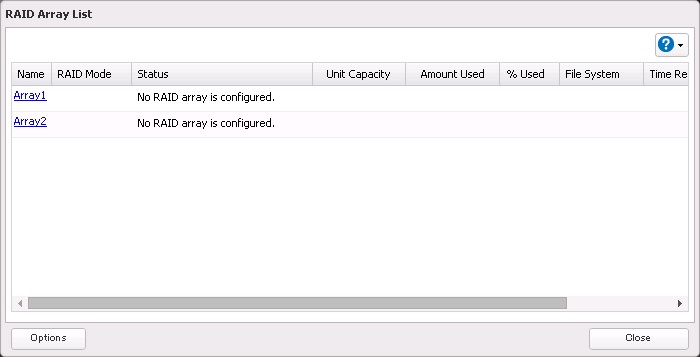
- On the RAID configuration screen click on the "RAID Mode" drop-down menu to select the RAID type you wish to use.
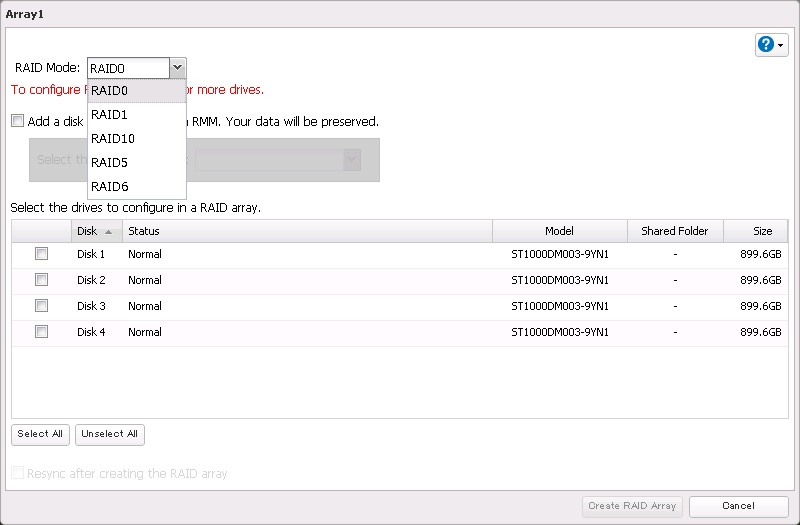
- In the example we are using a four-drive TeraStation. In a two-drive unit, only RAID 0 and RAID 1 will be available. Each RAID type provides different strengths and weaknesses. For example, RAID 0 provides more usable space and better performance but has no data redundancy. If a drive fails in a RAID 0 array, all the data stored on the array is lost. On a four-drive unit you can create two RAID 0 or RAID 1 arrays. For more information on RAID levels, please click here. In our example we're going to use RAID 5, which is the default configuration.
- After you select the RAID type, select the drives that you wish to add to the RAID. In most cases you will add all drives to a single RAID array. Again, reference the link above for a more complete description of RAID levels. Once you have the parameters set as you want them, click Create RAID Array.
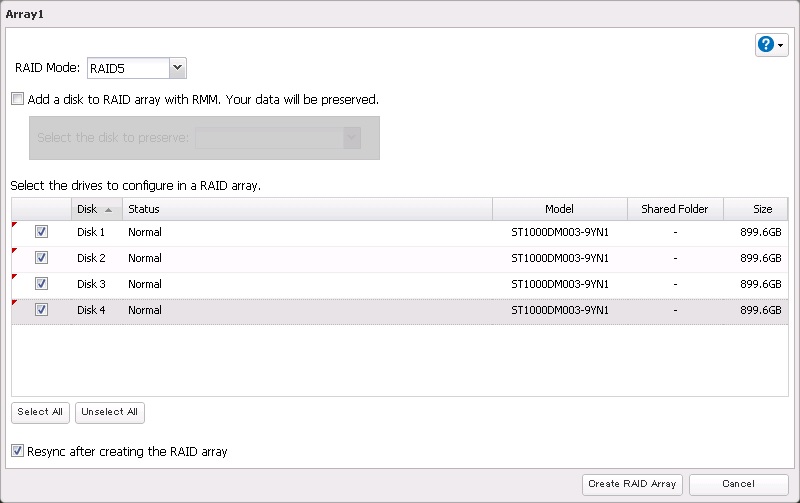
- You will receive the following warning. Click Yes.
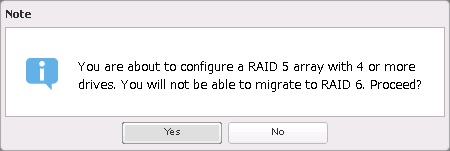
- You will be asked to enter a randomly generated four digit code to confirm the action. It will almost certainly not match the example. Enter the code given by your unit and click OK.
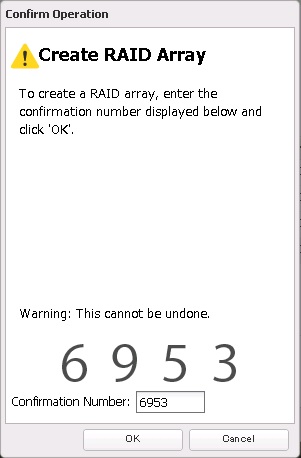
- The unit will take a few minutes to create the array. Once the process is complete you should receive this notification. Click OK.

- The new array should now be listed. The status will be "Syncing" with a progress indication to the right. You will now need to create one or more shared folders on the unit.
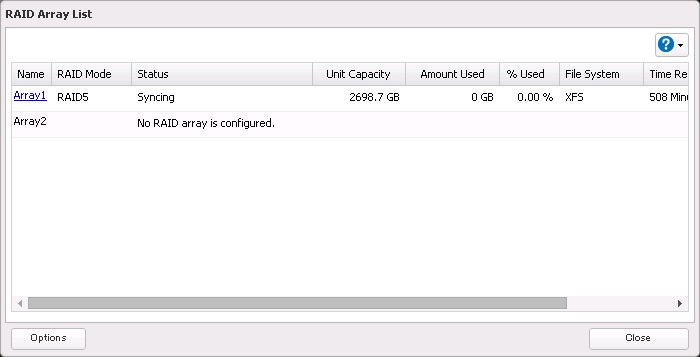
- Scroll to the right to see the progress of the syncing operation. There will be no usable shares on the new array. Refer to this page for details on creating a new shared folder.
